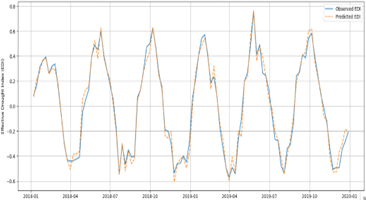Spatio-Temporal Forecasting of Hydro-Meteorological Extremes in Fiji Using Deep Learning and Ocean-Atmospheric Climate Indicators
Keywords:
Hydro-meteorological Extremes, Floods, Droughts, Fiji, Effective Drought Index (EDI), Deep Learning, Long Short-Term Memory (LSTM)Abstract
The increasing frequency and intensity of hydro-meteorological extremes, such as floods and droughts, pose significant risks to vulnerable Pacific island nations like Fiji. Accurate and timely forecasting of these events is essential for effective risk management and early warning systems. This study presents a novel deep learning framework that leverages long short-term memory (LSTM) networks to forecast the Effective Drought Index (EDI), a key indicator of hydrological extremes. The framework integrates multivariate spatial data and principal components of sea surface temperature (SST) to capture complex ocean-atmospheric climate influences on regional precipitation patterns. Comparative analysis of univariate, spatial-only, and multivariate models demonstrates that incorporating SST information significantly improves forecast skill, particularly for lead times up to 14 days. The spatial variability of model performance highlights challenges related to topography and localized climate effects. The results underscore the potential of combining deep learning with climate science to enhance early warning capabilities, supporting disaster preparedness and climate resilience in Fiji and similar island regions. Future work should explore higher spatial resolution modeling and the inclusion of additional climate drivers to further refine forecasting accuracy.


